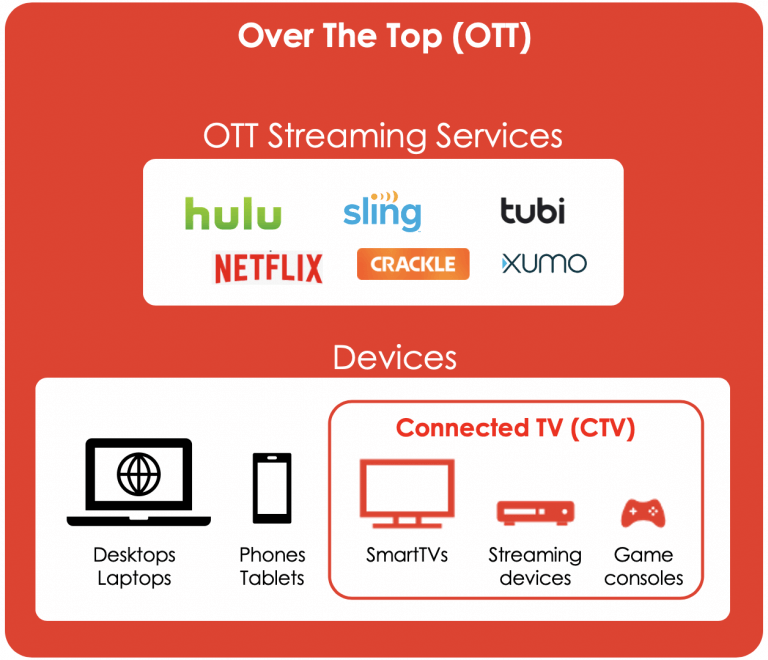Targeted Advertising TV
In today’s digital age, where television viewers have more options than ever, targeted advertising TV has emerged as a powerful tool for marketers to deliver personalized and relevant content to their audiences.
By harnessing the power of data and analytics, targeted advertising TV allows brands to connect with consumers based on their demographics, interests, and viewing habits. This tailored approach not only increases the effectiveness of advertising campaigns but also enhances the overall viewing experience for audiences.

Understanding the Benefits of Targeted Advertising
Targeted advertising on TV brings numerous benefits to brands and marketers. Firstly, it allows for more precise targeting, ensuring that ads reach the right audience. By leveraging data and analytics, brands can identify specific demographics, interests, and behaviors of viewers, enabling them to deliver highly relevant and personalized ads. This level of specificity increases the chances of capturing the attention of the target audience and driving engagement.
Secondly, targeted advertising TV offers better ROI. Traditional TV advertising reaches a broad audience, including those who may not be interested in the product or service being advertised. With targeted advertising, brands can allocate their advertising budget more efficiently by focusing on the audience segments that are most likely to convert. This targeted approach maximizes the impact of advertising spend and increases the likelihood of driving sales and conversions.
Lastly, targeted advertising TV enhances the overall viewing experience for audiences. Rather than being bombarded with irrelevant ads, viewers are presented with content that aligns with their interests and preferences. This personalized approach results in a more enjoyable and engaging viewing experience, leading to a positive perception of the brand and its products or services.

Statistics on the Effectiveness of Targeted Advertising on TV
The effectiveness of targeted advertising TV can be seen through various statistics. According to a study conducted by Nielsen, targeted TV ads were found to generate 2.7 times higher brand recall compared to traditional TV ads. This highlights the impact of delivering ads to a relevant audience who are more likely to pay attention and remember the brand message.
Furthermore, a report by eMarketer revealed that targeted TV ads are 70% more likely to drive website visits compared to non-targeted ads. This data demonstrates the power of reaching the right audience with personalized content, leading to increased interest and engagement with the brand.
Additionally, targeted advertising TV has been shown to increase ad engagement. A study conducted by Comcast Spotlight found that targeted TV ads resulted in 38% higher engagement compared to non-targeted ads. This increased engagement includes higher ad completion rates, click-through rates, and overall interaction with the ad content.
These statistics highlight the effectiveness of targeted advertising on TV and its ability to deliver better results compared to traditional advertising methods.

Types of Targeting Options Available for TV Advertising
Targeted advertising TV offers a range of targeting options to ensure that brands can reach their desired audience effectively. Here are some of the key targeting options available:
- Demographic Targeting: This involves segmenting the audience based on characteristics such as age, gender, income level, and household composition. Demographic targeting allows brands to tailor their ads to specific groups that are most likely to be interested in their products or services.
- Geographical Targeting: With geographical targeting, brands can focus their ads on specific regions, cities, or even zip codes. This targeting option is particularly useful for businesses with a local or regional presence, allowing them to reach audiences in their target market.
- Behavioral Targeting: Behavioral targeting involves analyzing viewers’ past behaviors and interests to deliver ads that align with their preferences. By understanding viewing habits, content consumption patterns, and online behaviors, brands can deliver personalized ads that resonate with the target audience.
- Contextual Targeting: Contextual targeting involves delivering ads based on the content being watched. By aligning the ad with the genre or theme of the program, brands can ensure that their ads are relevant and contextual to the viewer’s interests at that particular moment.
These targeting options provide brands with the flexibility to reach their desired audience effectively and deliver personalized content that drives engagement and conversion.

Creating a Targeted Advertising Campaign on TV
To create a successful targeted advertising campaign on TV, there are several key steps to follow:
- Define Your Target Audience: Start by clearly identifying your target audience based on demographics, interests, and behaviors. This will serve as the foundation for your targeted advertising campaign.
- Gather and Analyze Data: Collect relevant data on your target audience, including viewership data, online behaviors, and purchase history. Use analytics tools to analyze this data and gain insights into your audience’s preferences and habits.
- Develop Compelling Creative: Craft creative and compelling ads that resonate with your target audience. Tailor the messaging, visuals, and tone to align with their interests and preferences, ensuring maximum engagement.
- Choose the Right TV Networks and Programs: Select TV networks and programs that attract your target audience. Consider factors such as viewership demographics, genre, and reach to ensure your ads are placed in front of the right viewers.
- Optimize Ad Placement and Frequency: Continuously monitor and optimize your ad placement and frequency to maximize the impact of your campaign. Adjust your targeting parameters, ad scheduling, and frequency capping based on performance data and audience feedback.
- Measure and Analyze Results: Use analytics tools to track the performance of your targeted advertising campaign. Measure key metrics such as reach, engagement, conversions, and ROI to evaluate the effectiveness of your efforts and make data-driven decisions for future campaigns.
By following these steps, brands can create targeted advertising campaigns on TV that effectively reach their desired audience and drive desired results.

Best Practices for Optimizing Your Targeted TV Ads
To optimize your targeted TV ads and maximize their effectiveness, consider the following best practices:
- Test Different Ad Formats: Experiment with various ad formats such as traditional commercials, product placements, branded content, and interactive ads. Test and track the performance of each format to identify which resonates best with your target audience.
- Personalize Ad Content: Tailor your ad content to align with the interests and preferences of your target audience. Use dynamic ad insertion technology to deliver personalized messages based on viewer data.
- Align with Program Context: Ensure your ads align with the context of the program being watched. Consider the tone, genre, and theme of the program to ensure your ads are relevant and resonate with the viewers.
- Optimize Ad Length: Test different ad lengths to find the optimal duration that captures and maintains viewer attention. Shorter ads tend to perform better in terms of engagement and completion rates.
- Leverage Advanced Targeting Capabilities: Take advantage of advanced targeting capabilities offered by TV networks and platforms. This may include options such as daypart targeting, weather targeting, or device targeting.
- Continuously Monitor and Optimize: Regularly review the performance of your targeted TV ads and make necessary adjustments. Monitor key metrics such as ad reach, frequency, engagement, and conversion rates to identify areas for improvement and optimize your campaign accordingly.
By implementing these best practices, brands can maximize the effectiveness of their targeted TV ads and drive better results.
Case Studies of Successful Targeted TV Advertising Campaigns
- Nike: Nike’s targeted advertising campaign on TV aimed to reach sports enthusiasts and fitness enthusiasts. By leveraging demographic and behavioral targeting, Nike delivered ads during popular sports events, targeting specific age groups and interests. This campaign resulted in a significant increase in brand awareness and engagement among the target audience.
- Coca-Cola: Coca-Cola implemented a targeted TV advertising campaign during the holiday season. By analyzing viewership data and incorporating contextual targeting, Coca-Cola delivered ads during family-oriented programs and holiday specials. This campaign resulted in a boost in sales and increased brand loyalty among families.
- BMW: BMW utilized targeted TV advertising to reach luxury car enthusiasts. By leveraging demographic and behavioral targeting, BMW delivered ads during high-end lifestyle and automotive shows. This campaign led to a significant increase in test drive requests and ultimately drove sales for BMW.
These case studies highlight the effectiveness of targeted TV advertising in driving brand awareness, engagement, and sales.

Tools and Resources for Implementing Targeted TV Advertising
Implementing targeted TV advertising requires the use of various tools and resources. Here are some key tools and resources to consider:
- Data Analytics Platforms: Utilize data analytics platforms to collect, analyze, and gain insights from audience data. Platforms such as Google Analytics, Nielsen, and Comscore offer robust analytics capabilities for TV advertising.
- Ad Tech Platforms: Use ad tech platforms to manage and optimize your targeted TV ad campaigns. Platforms like DoubleClick, Adobe Advertising Cloud, and WideOrbit provide features that enable precise targeting, ad scheduling, and performance tracking.
- TV Network and Platform Partnerships: Collaborate with TV networks and platforms that offer targeted advertising capabilities. Major networks such as NBC, CBS, and ABC, as well as streaming platforms like Hulu and Roku, provide options for targeted TV advertising.
- Research Reports and Industry Publications: Stay updated on the latest trends and insights in targeted TV advertising by referring to research reports and industry publications. Reports from eMarketer, Adweek, and Nielsen can provide valuable information for planning and executing targeted TV ad campaigns.
These tools and resources can help brands effectively implement targeted TV advertising and achieve their marketing objectives.
Comparing Targeted Advertising on TV with Other Advertising Mediums
While targeted advertising on TV offers unique advantages, it is important to consider how it compares to other advertising mediums. Here are some key points of comparison:
- Reach and Scale: TV advertising, especially on national networks, offers broad reach and scale, allowing brands to reach a large audience simultaneously. This is particularly beneficial for campaigns aimed at building brand awareness.
- Precision Targeting: Digital advertising platforms, such as social media and search engines, offer highly precise targeting capabilities. These platforms allow for granular targeting based on demographics, interests, and online behaviors, providing a higher level of precision compared to targeted TV advertising.
- Engagement and Impact: TV advertising, when effectively targeted, has the potential to engage viewers on a larger screen with captivating visuals and sound, leading to higher impact. Digital advertising, on the other hand, offers interactive elements and immediate actions, allowing for instant engagement and tracking.
- Cost and Budget Allocation: TV advertising, especially during prime time slots or popular events, can be expensive. Digital advertising often offers more cost-effective options, allowing brands to allocate their budget more efficiently.
It is important for brands to consider their marketing objectives, target audience, and budget when deciding which advertising medium to leverage. A combination of targeted TV advertising and digital advertising can often yield the best results, ensuring maximum reach, precision, and engagement.
Conclusion: The Future of Targeted Advertising on TV
Targeted advertising TV has revolutionized the way brands connect with their audiences, offering personalized and relevant content that drives engagement and increases ROI. With advancements in data analytics and technology, the future of targeted advertising on TV looks promising. As TV networks and platforms continue to enhance their targeting capabilities, brands can expect even more precise and effective ways to reach their desired audience.
In conclusion, targeted advertising TV provides brands with the opportunity to deliver their messages directly to the right people at the right time. By understanding their target audience, leveraging data and analytics, and implementing best practices, brands can create successful targeted advertising campaigns on TV.
As technology evolves and consumer behaviors change, targeted advertising on TV will continue to play a pivotal role in the marketing strategies of brands worldwide



